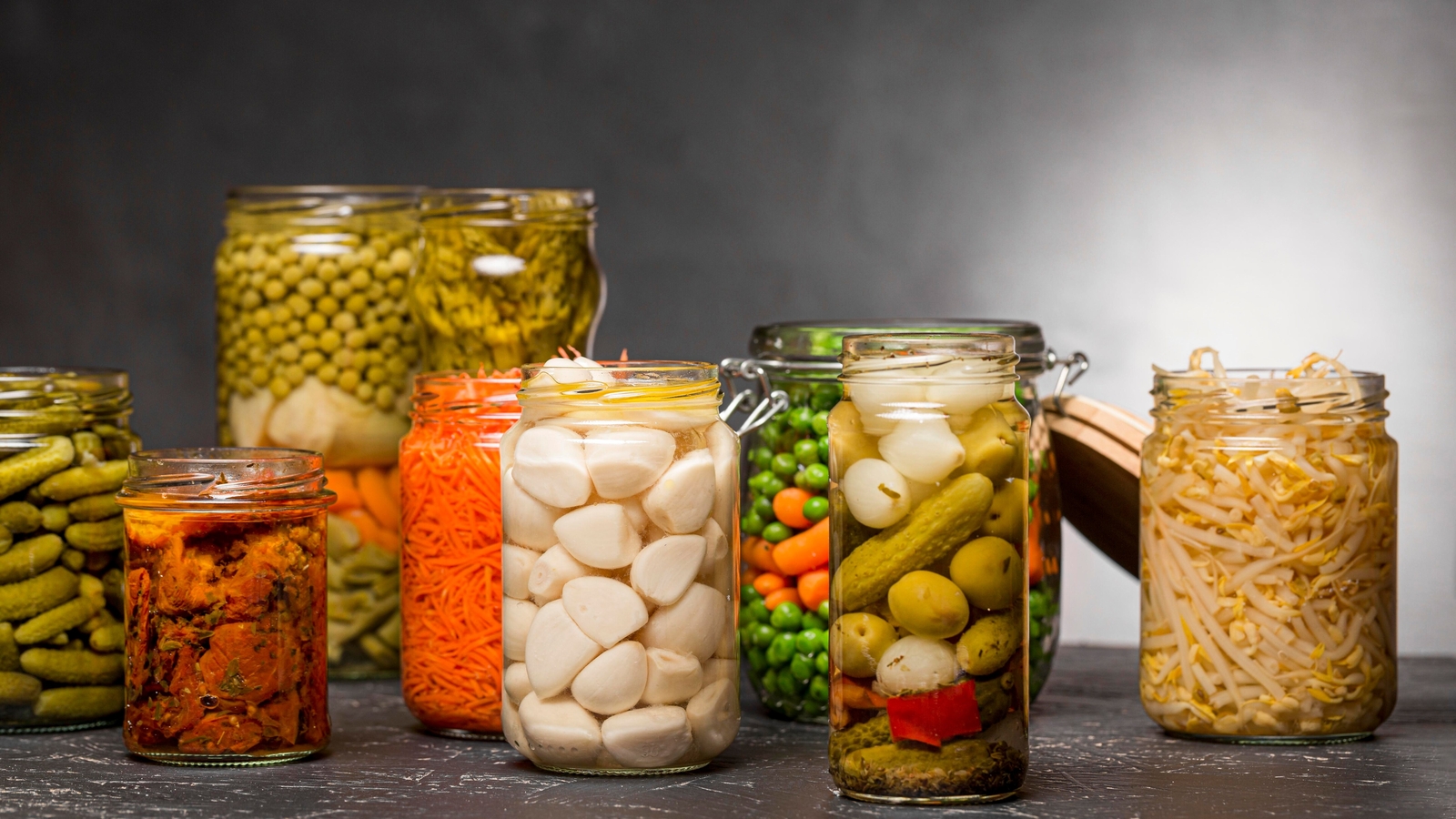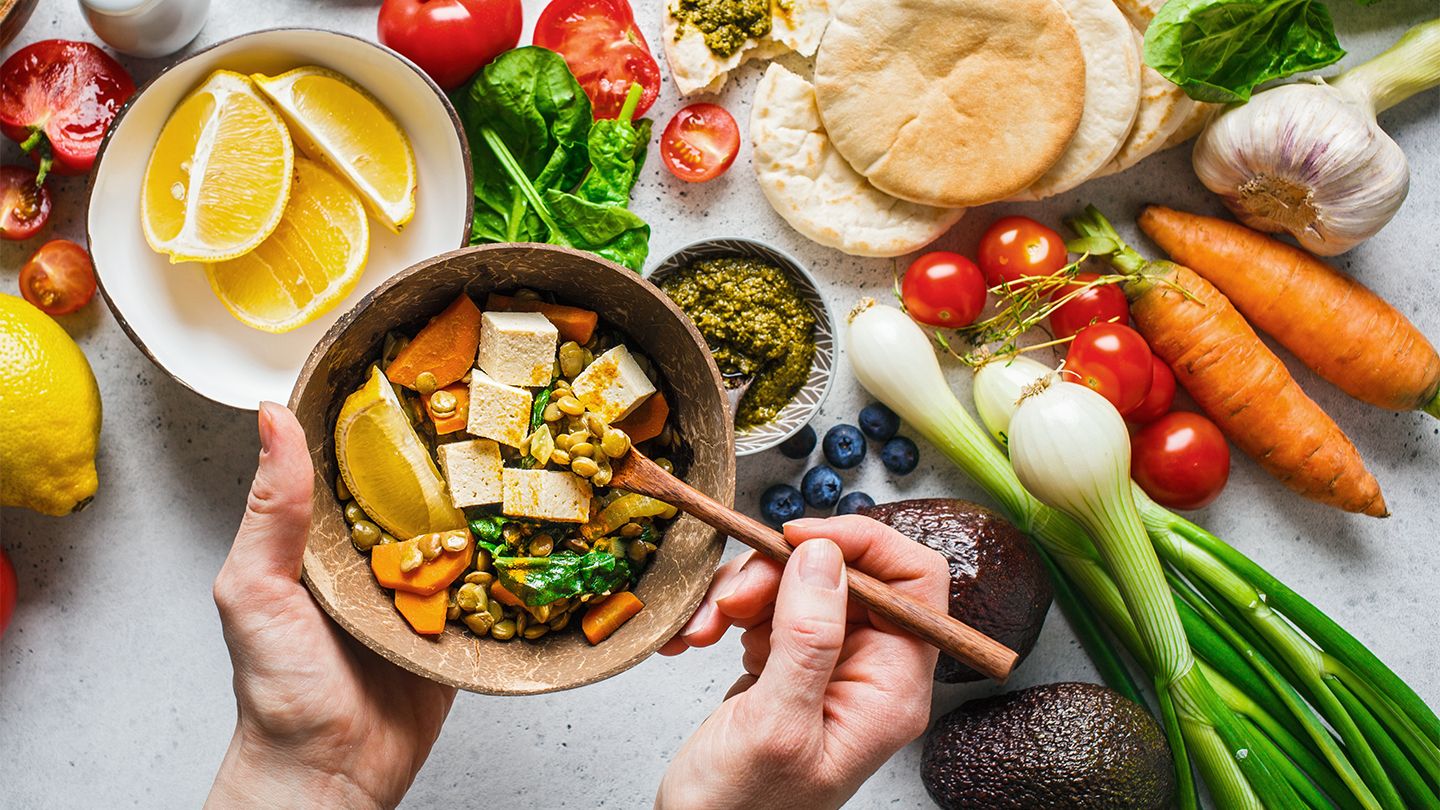Traditional fermented foods have been part of the human diet for centuries, revered in many cultures not only for their distinctive and pungent flavours but also for their incredible health benefits. Fermented foods undergo a lacto-fermentation process in which naturally occurring bacteria feed on the sugars and starches in the food, creating beneficial enzymes, vitamins and probiotics that preserve the food while creating beneficial nutrients and compounds that support a healthy gut and microbiome. In this article, we take a journey back into the past to explore the history of fermented foods, the health benefits, and offer you a few choice recipes you can make at home.
Fermentation doesn’t just make foods tastier and easier to digest; it also gives rise to culinary traditions around the world. From Korean kimchi to German sauerkraut, from Japanese miso to Indian dosa, fermented foods are different as the people who make them. Experience the wonder of fermentation, understand how these foods can make you healthier, and learn to incorporate them into your diet on a daily basis.
The History of Fermented Foods
Fermented foods have been a staple of society beginning with the advent of agriculture. Archaeological research reveals that as early as 7000 BCE, people in ancient China and Mesopotamia were fermenting grapes and rice to create intoxicants. The earliest uses of fermentation as a means of preserving food provided sustenance to early human civilisations long after harvest, helping communities survive difficult winters and droughts. The trait of fermentation evolved by accident, but, once discovered, it quickly became a standard part of global foodways.
Regional fermented foods emerged with distinct flavours and properties, based on climate conditions, crops and available ingredients. Cold, moist Northern Europe was home to sauerkraut, salt-preserved sour cabbage, while the warmer, humid climates of East Asia yielded soy sauce and kimchi. Besides extended shelf life, fermented foods carried complex flavours and potential health benefits. Most of the traditional foods alive today come from ancient cooking, and we still eat them not only because of their historical legacy and cultural significance but also because they taste great.
Health Benefits of Fermented Foods
The health benefits of fermented foods are well-documented, and include the powerful boost they provide to our gut. Foods that are fermented will be teeming with probiotics, or beneficial bacteria that help to maintain a healthy balance in your gut microbiota. This is important because the right balance of good bacteria is essential to areas that impact our health and wellbeing, including digestion, nutrient absorption and immune function. Consuming probiotics on a regular basis can help stave off digestive troubles such as bloating, constipation and diarrhoea.
Furthermore, fermented foods are considered conducive to the immune system: because the gut plays an important role in our immune response, maintaining healthy gut flora can help to protect against infections and reduce inflammation. Fermented foods tends to be full of vitamins, generally they are rich in B vitamins and vitamin K which are crucial to the healthy production of energy within our bodies (or the extraction of usable energy from the food we eat) and for the process of blood clotting. Plus, the fermentation process can rise the bioavailability of a food’s nutrients – that is, it can converted its nutrients into a form that our body can more easily absorb.
Popular Fermented Foods Around the World
Ferments alone offer potentially endless diversity of flavours and formats — eachfood buttressed by a rich cultural history Sauerkraut — a classic food fermented from shredded cabbage — represents a German delicacy, with cultures all around the world finding time-honoured ways to create a crunchy, tangy punch, providing probiotics to every nibble. Kimchi, a salty, fermented staple of traditional Korean cooking, can be made with a dizzying array of vegetables — typically cabbage and radishes — mixed with chili pepper, garlic, ginger and other seasonings. These salty, fermented veggies are eaten as a side dish and sometimes also incorporated into other dishes as a scooped condiment, a garnish sprinkle, or a creative vegan bulk ingredient.
Sauerkraut and yogurt are among the most popular fermented foods in Europe. Sauerkraut, or sour cabbage, is fermented cabbage and provides a tart distinctive flavour. It is often served as an accompaniment to meats and mashed potatoes. Yogurt is another popular fermented food that is produced by allowing milk to be converted by bacterial cultures. Yogurt is a versatile food that can be eaten alone, used in smoothies, or as a base for dressings and sauces.
How to Make Fermented Foods at Home
The homemade version of fermented products can be a highly beneficial, healthy hobby. Typically, the production involves a few basic ingredients and a little patience. We need only cabbage and salt to produce sauerkraut: cut, salt and pack packed together in a jar to ferment for several weeks, where the indigenous bacteria of the cabbage is free to anaerobically produce lactic acid from the sugars, creating a tangy, probiotic ferment.
Likewise, homemade yogurt requires milk and a starter culture, which can be obtained from live-cultures-containing yoghurt sourced from the supermarket. You simply start by heating the milk, cooling it, adding your starter, and then leaving it to ferment for a few hours. The benefits of home-produced fermented foods is that you can exert complete control over the inputs and process, producing healthy foods for a fraction of the cost of buying similar analogues. And, if you have kids, it is also fantastic educational fun.
Delicious Fermented Food Recipes
There are several delicious and easy recipes you can follow to include these fermented foods in your diet. One recipe is for kimchi. Napa cabbage, daikon radish, green onions, garlic, ginger and Korean chili powder make up the basic ingredients. You mix the salted vegetables with the spices and pack them into jars to ferment for a few days to several weeks. The end result is a spicy, tangy, crunchy condiment perfect as a side dish for some rice, noodles, or even on its own.
Another simple, nutritious recipe is kefir, a fermented milk drink quite unlike yogurt, yet similar in that it is a breakfast beverage with a thinner consistency and a slightly more sour taste to yogurt. For kefir, you need to get hold of ingredients called kefir grains, a combination of bacteria and yeast that are added to milk as a starter. The milk is left to ferment at room temperature for 24 hours. The resulting drink is loaded with probiotics and can be enhanced with chopped fruit, a spoonful of honey or used as a base for a smoothie. These recipes aren’t just a taste of other places – they are good for you.
Tips for Incorporating Fermented Foods into Your Diet
By adding fermentation to your diet, you can take a simple and fun approach: just start small, and go slow. Begin to incorporate small amounts of these foods into your diet. Have a teaspoon of sauerkraut with your sandwich or salad at lunch, or a serving of yogurt with breakfast. These small additions can help your palate to adjust to the unusual flavour of fermented foods, as well as helping your body to get used to the extra probiotic presence that these foods bring.
Different types of fermented foods can also mix up your diet, so dare to experiment. Blend miso into soups and marinades, or use kefir as a base for your smoothies and salad dressings. Also, look around the world, in the international fermented foods classics or in restaurants specialising in different cuisines, to find new ferments and recipes. Enjoy the full rainbow of flavours and health benefits fermented foods can bring to your diet with a variety of intake. Moderation is the key: listen to your body and enjoy, but don’t overdo it.
Conclusion
Fermented foods are a testament to the ingenuity of human culture and the enduring quest for health and preservation. They offer a unique combination of flavors and health benefits, making them a valuable addition to any diet. Whether you’re enjoying a bowl of tangy kimchi, a serving of creamy yogurt, or a glass of probiotic-rich kefir, you’re partaking in a culinary tradition that spans millennia and continents.
By exploring and incorporating fermented foods into your daily routine, you can not only enhance your meals but also support your overall health. The process of making these foods at home can be both educational and rewarding, providing a deeper connection to the food you eat. So, embark on this flavorful journey and discover the wonders of fermentation for yourself. Your taste buds and your gut will thank you.


